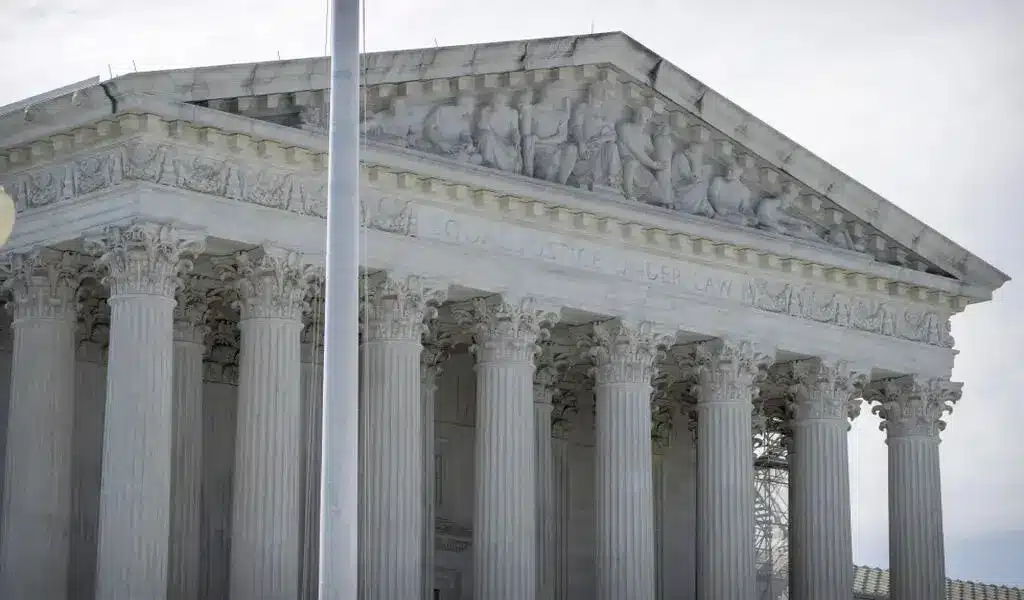News
Mekong Villagers give their Testimony in Xayaburi Dam Case
.
.
BANGKOK – A Administrative Court in Bangkok heard testimony from two of the plaintiffs in the case which was filed by 37 Thai Villagers against the signing of the Power Purchase Agreement for the Xayaburi Dam.
The judges for the case listened carefully to the plaintiffs and took notes during their testimony. It was the first time that the Court heard directly from the community members, in their own words, since the case was accepted in June 2014.
The case itself has attracted significant attention within the Mekong region, as it continues to highlight the ongoing concerns with the Xayaburi Dam and the strength of communities to voice these concerns and demand that their rights are recognized and protected.
The majority of the 37 plaintiffs were present at the Court, having traveled from North and Northeast Thailand to attend the hearing. They entered the courtroom holding photographs of their homes along the Mekong River, images of their river bank gardens, and fish traps, visual reminders of what is at stake from the trans boundary impacts of the Xayaburi Dam upstream in Laos.
Niwat Roykaew, a community leader from Chiang Khong addressed the Court first: “For the past two decades, we have experienced drastic impacts after a series of dams were built upstream in China, some hundreds of kilometer away from our home in Chiang Rai, Northern Thailand. To date, the Xayaburi Dam construction is already half way completed. The Mekong River at the construction site is now flowing through a concrete structure that reaches across half of the Mekong River’s width. The construction seems to be proceeding very quickly and it is likely to generate electricity for Thailand, for purchase through EGAT, as planned.
However, social and environmental trans boundary impacts as a result of the dam still have not been made public. No one can tell us how many fish species will be blocked from migrating upstream to spawn. All the designs for fish passage and fish lifts are still just an experiment. No one can tell us how many riverine communities; fishers, gardeners, gold panners, and ordinary villagers will be affected.
Xayaburi Dam is the first dam on the Lower Mekong, and this lawsuit is going to be a standard for future projects on the Mekong and in the region. The value of this legal case is it could create a path to extraterritorial obligations for Thailand’s investment overseas. And make us, as a country, more responsible.”

Map of the Mekong shows the critical resources that support the lives of communities along the river.
Mrs. Sorn Champadok, a mother, fisherwoman and villager from Phosai District in Ubon Ratchatanee then spoke: “My home is in Phosai District in Ubon Ratchatanee. I am a mother of 5 children, we are a fishing family. We also grow plants on the Mekong’s bank during dry season. We have made our entire living from the Mekong River. Lots of fish we catch and also use to make fermented fish, and sell to buy rice. So that we have fish and rice.
Fishing in the Mekong has meant that we have enough money to send our kids to school. In fishing months like October we have sold our fish and earned as much as 50,000 THB for a month. But for the past years we have seen adverse changes to the river ecosystems and water levels. Fish catch has declined. Our income and sources for foods are affected. This has happened after the dams were built on the Upper Mekong in Yunnan, China.
I am concerned that the Xayaburi Dam construction will make even more negative impacts on the Mekong River, resources, and our lives.”
In an Opinion piece published in The Bangkok Post on Monday, Sor Rattanamanee Polkla, one of the lawyers representing the plaintiff villagers, highlighted the importance of the case: “It is the first community-filed public interest lawsuit in the region concerning destructive dam-building on the Mekong River,” she said. “It represents a critical legal mechanism to protect community rights. It also highlights the Xayaburi dam’s trans boundary impact and corresponding obligations to ensure the rights of those affected, regardless of where the project is located.”
In accepting the case in June 2014, the Supreme Administrative Court did so in recognition that the Xayaburi Dam poses a trans boundary threat to the Mekong River and to communities in Thailand.
The final verdict for the case has yet to be delivered, but we hope that in their decision, the Court will prioritize the rights of Thai villagers, over the interests of the companies involved in the Xayaburi Dam project; and that they will hold those responsible accountable for decision-making which will impact the lives of Thai citizens.
We urgently need laws in Thailand to address trans boundary issues, and a legal system which works to uphold the rights of its people.
By International Rivers, Montree Chantawong
- In 2011, The Electricity Generating Authority of Thailand (EGAT) signed the Power Purchase Agreement for 95% of electricity generated by the Xayaburi Dam, which was based on approval by four other Thai government agencies.
- 37 plaintiffs composing of villagers living in eight provinces along the Mekong in Thailand from Chiang Rai to Ubon filed a lawsuit against five government bodies, including the National Energy Policy Council, the Thai Cabinet, and the Electricity Generating Authority of Thailand (EGAT).
- The lawsuit claims that approval of the project’s Power Purchase Agreement (PPA) is illegal under both the Thai Constitution and the 1995 Mekong Agreement. The PPA made between EGAT and the Xayaburi Power Company Limited, was approved without an assessment of the project’s transboundary environmental and health impacts and without consultations in Thailand, in volition of the Thai Constitution. The case was accepted by the Supreme Administrative Court in June 2014.
- In accepting the case, the Court stated that communities in Thailand “are entitled to participate in the management, maintenance, preservation and exploitation of the natural resources and the environment, in a balanced and sustainable manner, in order to enable themselves to live a normal life consistently in an environment that is not harmful to their health, sanitation, welfare and quality of life.”
Timeline:
- October 2011 – The Electricity Generating Authority of Thailand signs a Power Purchase Agreement with the Xayaburi Power Company Ltd to purchase 95% of the electricity from the Xayaburi Dam in Laos.
- August 7, 2012 – 37 villagers from communities along the Mekong River in North and Northeastern Thailand file a case with the Administrative Court in Thailand against five Thai Government agencies for their involement in the signing of the Power Purchase Agreement for the Xayaburi Dam.
- February 2013 – The Administrative Court deny jurisdiction to hear the case.
- March 2013 – The plaintiffs file a formal appeal with Thailand’s Supreme Administrative Court.
- June 24 2014 – Thailand’s Supreme Administrative Court accept the lawsuit.
- October 17, 2014 – Thai communities file an injunction with the Administrative Court calling for a halt to construction on the Xayaburi Dam while the Court rules on the case.
- July 24, 2015 – Final submission of evidence by the plaintiffs to the Court.
- November 30, 2015 – First case hearing.

News
Google’s Search Dominance Is Unwinding, But Still Accounting 48% Search Revenue

Google is so closely associated with its key product that its name is a verb that signifies “search.” However, Google’s dominance in that sector is dwindling.
According to eMarketer, Google will lose control of the US search industry for the first time in decades next year.
Google will remain the dominant search player, accounting for 48% of American search advertising revenue. And, remarkably, Google is still increasing its sales in the field, despite being the dominating player in search since the early days of the George W. Bush administration. However, Amazon is growing at a quicker rate.
Google’s Search Dominance Is Unwinding
Amazon will hold over a quarter of US search ad dollars next year, rising to 27% by 2026, while Google will fall even more, according to eMarketer.
The Wall Street Journal was first to report on the forecast.
Lest you think you’ll have to switch to Bing or Yahoo, this isn’t the end of Google or anything really near.
Google is the fourth-most valued public firm in the world. Its market worth is $2.1 trillion, trailing just Apple, Microsoft, and the AI chip darling Nvidia. It also maintains its dominance in other industries, such as display advertisements, where it dominates alongside Facebook’s parent firm Meta, and video ads on YouTube.
To put those “other” firms in context, each is worth more than Delta Air Lines’ total market value. So, yeah, Google is not going anywhere.
Nonetheless, Google faces numerous dangers to its operations, particularly from antitrust regulators.
On Monday, a federal judge in San Francisco ruled that Google must open up its Google Play Store to competitors, dealing a significant blow to the firm in its long-running battle with Fortnite creator Epic Games. Google announced that it would appeal the verdict.
In August, a federal judge ruled that Google has an illegal monopoly on search. That verdict could lead to the dissolution of the company’s search operation. Another antitrust lawsuit filed last month accuses Google of abusing its dominance in the online advertising business.
Meanwhile, European regulators have compelled Google to follow tough new standards, which have resulted in multiple $1 billion-plus fines.

Pixa Bay
Google’s Search Dominance Is Unwinding
On top of that, the marketplace is becoming more difficult on its own.
TikTok, the fastest-growing social network, is expanding into the search market. And Amazon has accomplished something few other digital titans have done to date: it has established a habit.
When you want to buy anything, you usually go to Amazon, not Google. Amazon then buys adverts to push companies’ products to the top of your search results, increasing sales and earning Amazon a greater portion of the revenue. According to eMarketer, it is expected to generate $27.8 billion in search revenue in the United States next year, trailing only Google’s $62.9 billion total.
And then there’s AI, the technology that (supposedly) will change everything.
Why search in stilted language for “kendall jenner why bad bunny breakup” or “police moving violation driver rights no stop sign” when you can just ask OpenAI’s ChatGPT, “What’s going on with Kendall Jenner and Bad Bunny?” in “I need help fighting a moving violation involving a stop sign that wasn’t visible.” Google is working on exactly this technology with its Gemini product, but its success is far from guaranteed, especially with Apple collaborating with OpenAI and other businesses rapidly joining the market.
A Google spokeswoman referred to a blog post from last week in which the company unveiled ads in its AI overviews (the AI-generated text that appears at the top of search results). It’s Google’s way of expressing its ability to profit on a changing marketplace while retaining its business, even as its consumers steadily transition to ask-and-answer AI and away from search.

Google has long used a single catchphrase to defend itself against opponents who claim it is a monopoly abusing its power: competition is only a click away. Until recently, that seemed comically obtuse. Really? We are going to switch to Bing? Or Duck Duck Go? Give me a break.
But today, it feels more like reality.
Google is in no danger of disappearing. However, every highly dominating company faces some type of reckoning over time. GE, a Dow mainstay for more than a century, was broken up last year and is now a shell of its previous dominance. Sears declared bankruptcy in 2022 and is virtually out of business. US Steel, long the foundation of American manufacturing, is attempting to sell itself to a Japanese corporation.
SOURCE | CNN
News
2024 | Supreme Court Won’t Hear Appeal From Elon Musk’s X Platform Over Warrant In Trump Case

Washington — Trump Media, The Supreme Court announced Monday that it will not hear an appeal from social media platform X about a search warrant acquired by prosecutors in the election meddling case against former President Donald Trump.
The justices did not explain their rationale, and there were no recorded dissents.
The firm, which was known as Twitter before being purchased by billionaire Elon Musk, claims a nondisclosure order that prevented it from informing Trump about the warrant obtained by special counsel Jack Smith’s team violated its First Amendment rights.
The business also claims Trump should have had an opportunity to exercise executive privilege. If not reined in, the government may employ similar tactics to intercept additional privileged communications, their lawyers contended.
Supreme Court Won’t Hear Appeal From Elon Musk’s X Platform Over Warrant In Trump Case
Two neutral electronic privacy groups also joined in, urging the high court to hear the case on First Amendment grounds.
Prosecutors, however, claim that the corporation never shown that Trump utilized the account for official purposes, therefore executive privilege is not a problem. A lower court also determined that informing Trump could have compromised the current probe.

Trump utilized his Twitter account in the weeks preceding up to his supporters’ attack on the Capitol on January 6, 2021, to spread false assertions about the election, which prosecutors claim were intended to create doubt in the democratic process.
The indictment describes how Trump used his Twitter account to encourage his followers to travel to Washington on Jan. 6, pressuring Vice President Mike Pence to reject the certification, and falsely claiming that the Capitol crowd, which battered police officers and destroyed glass, was peaceful.
Supreme Court Won’t Hear Appeal From Elon Musk’s X Platform Over Warrant In Trump Case
That case is now moving forward following the Supreme Court’s verdict in July, which granted Trump full immunity from criminal prosecution as a former president.
The warrant arrived at Twitter amid quick changes implemented by Musk, who bought the company in 2022 and has since cut off most of its workforce, including those dedicated to combating disinformation and hate speech.
SOURCE | AP
News
The Supreme Court Turns Down Biden’s Government Appeal in a Texas Emergency Abortion Matter.

(VOR News) – A ruling that prohibits emergency abortions that contravene the Supreme Court law in the state of Texas, which has one of the most stringent abortion restrictions in the country, has been upheld by the Supreme Court of the United States. The United States Supreme Court upheld this decision.
The justices did not provide any specifics regarding the underlying reasons for their decision to uphold an order from a lower court that declared hospitals cannot be legally obligated to administer abortions if doing so would violate the law in the state of Texas.
Institutions are not required to perform abortions, as stipulated in the decree. The common populace did not investigate any opposing viewpoints. The decision was made just weeks before a presidential election that brought abortion to the forefront of the political agenda.
This decision follows the 2022 Supreme Court ruling that ended abortion nationwide.
In response to a request from the administration of Vice President Joe Biden to overturn the lower court’s decision, the justices expressed their disapproval.
The government contends that hospitals are obligated to perform abortions in compliance with federal legislation when the health or life of an expectant patient is in an exceedingly precarious condition.
This is the case in regions where the procedure is prohibited. The difficulty hospitals in Texas and other states are experiencing in determining whether or not routine care could be in violation of stringent state laws that prohibit abortion has resulted in an increase in the number of complaints concerning pregnant women who are experiencing medical distress being turned away from emergency rooms.
The administration cited the Supreme Court’s ruling in a case that bore a striking resemblance to the one that was presented to it in Idaho at the beginning of the year. The justices took a limited decision in that case to allow the continuation of emergency abortions without interruption while a lawsuit was still being heard.
In contrast, Texas has been a vocal proponent of the injunction’s continued enforcement. Texas has argued that its circumstances are distinct from those of Idaho, as the state does have an exemption for situations that pose a significant hazard to the health of an expectant patient.
According to the state, the discrepancy is the result of this exemption. The state of Idaho had a provision that safeguarded a woman’s life when the issue was first broached; however, it did not include protection for her health.
Certified medical practitioners are not obligated to wait until a woman’s life is in imminent peril before they are legally permitted to perform an abortion, as determined by the state supreme court.
The state of Texas highlighted this to the Supreme Court.
Nevertheless, medical professionals have criticized the Texas statute as being perilously ambiguous, and a medical board has declined to provide a list of all the disorders that are eligible for an exception. Furthermore, the statute has been criticized for its hazardous ambiguity.
For an extended period, termination of pregnancies has been a standard procedure in medical treatment for individuals who have been experiencing significant issues. It is implemented in this manner to prevent catastrophic outcomes, such as sepsis, organ failure, and other severe scenarios.
Nevertheless, medical professionals and hospitals in Texas and other states with strict abortion laws have noted that it is uncertain whether or not these terminations could be in violation of abortion prohibitions that include the possibility of a prison sentence. This is the case in regions where abortion prohibitions are exceedingly restrictive.
Following the Supreme Court’s decision to overturn Roe v. Wade, which resulted in restrictions on the rights of women to have abortions in several Republican-ruled states, the Texas case was revisited in 2022.
As per the orders that were disclosed by the administration of Vice President Joe Biden, hospitals are still required to provide abortions in cases that are classified as dire emergency.
As stipulated in a piece of health care legislation, the majority of hospitals are obligated to provide medical assistance to patients who are experiencing medical distress. This is in accordance with the law.
The state of Texas maintained that hospitals should not be obligated to provide abortions throughout the litigation, as doing so would violate the state’s constitutional prohibition on abortions. In its January judgment, the 5th United States Circuit Court of Appeals concurred with the state and acknowledged that the administration had exceeded its authority.
SOURCE: AP
SEE ALSO:
Could Last-Minute Surprises Derail Kamala Harris’ Campaign? “Nostradamus” Explains the US Poll.
-

 News4 years ago
News4 years agoLet’s Know About Ultra High Net Worth Individual
-
Entertainment2 years ago
Mabelle Prior: The Voice of Hope, Resilience, and Diversity Inspiring Generations
-

 Health4 years ago
Health4 years agoHow Much Ivermectin Should You Take?
-

 Tech2 years ago
Tech2 years agoTop Forex Brokers of 2023: Reviews and Analysis for Successful Trading
-
News11 years ago
Enviromental Groups Tell Mekong Leaders Lao Dam Evaluation Process Flawed
-

 Lifestyles3 years ago
Lifestyles3 years agoAries Soulmate Signs
-

 Entertainment3 years ago
Entertainment3 years agoWhat Should I Do If Disney Plus Keeps Logging Me Out of TV?
-

 Health3 years ago
Health3 years agoCan I Buy Ivermectin Without A Prescription in the USA?




